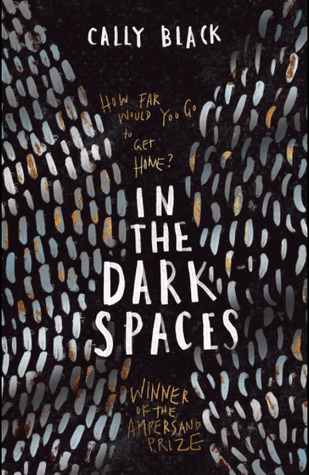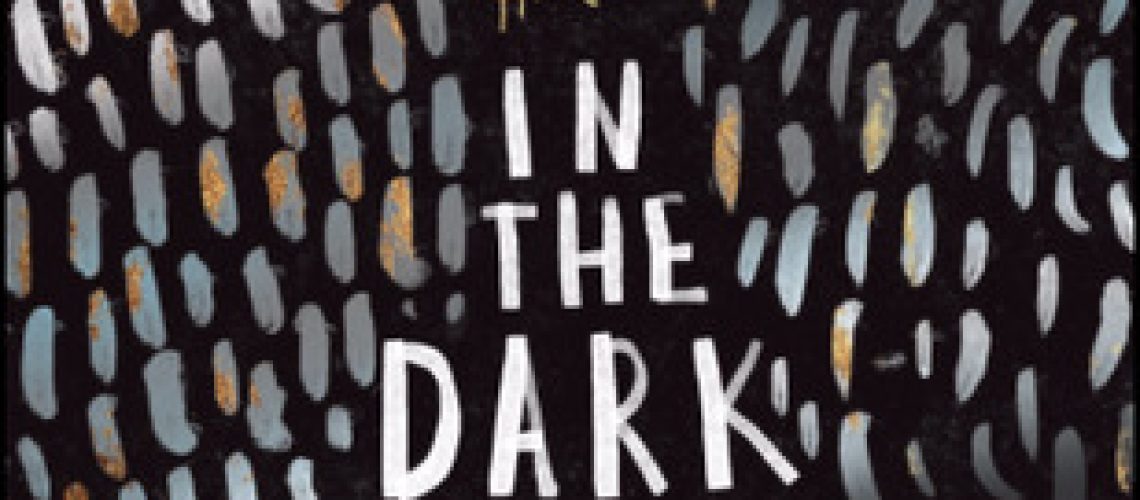Cally Black is a fresh voice in young adult science fiction. Her debut novel, In the Dark Spaces, is a YA sci-fi horror that has received some critical acclaim in Australia, winning the Ampersand Prize for unpublished manuscripts in 2015 and, more recently, the Aurealis Award for Best Young Adult Novel. It explores some big issues, such as the myth of Terra Nullius and the flaws of capitalism, in a way that’s accessible for younger readers.
The story is told in first person from the perspective of Tamara, a fourteen-year-old orphan. After her parents died of a plague, she was taken in by her Aunt Lazella who is a cook aboard a space freighter. However, there aren’t supposed to be any children on the freighter, so Tamara and her young nephew Tamiki must stay hidden in Lazella’s room, never speaking above a whisper and relying on their caretaker to bring back whatever scraps of food she can to feed them. Sometimes Tamara sneaks out to steal protein packs from the ship’s pantry. She’s on one such foray when the ship is attacked by aliens. Tamara is captured and taken back to the alien’s hive where she begins to learn their language and culture.

It’s hard to pin down the exact age range to whom the book is intended to appeal. At fourteen, Tamara is at the younger end of the YA market and her uneducated voice makes her sound younger still. It would be tempting to shuffle the book into middle grade, if not for the darkness of the content. The book doesn’t shy away from violence. Not only does Tamara bear witness to many deaths, but she is also made complicit in the killing—an issue with which she wrestles.
The story also avoids the usual romantic elements included in most young adult novels. Instead, the focus is very much on family and belonging. When Tamara is captured by the Garuwa, she is conscious that she left her nephew behind in their aunt’s room. He barely more than a toddler, so she’s desperate for news of his fate and does what she can while she’s among the Garuwa to find out if he survived.
Gradually, she begins to learn about the Garuwa. At first, this is merely a matter of survival, but eventually becomes more. She finds a home for herself, albeit one coloured by trauma. She comes to understand their motivations and to relate to them as individuals. This leads Tamara to become stranded between two worlds, not quite human and not quite Garuwa—both and neither at the same time. Like many people who belong to multiple cultures, she struggles to find a place where all parts of her are accepted.
Aliens have often been used as a metaphor for people of colour. In the Dark Spaces uses this approach not only to examine the challenge of bridging cultures, but also to explore themes of colonisation. Colonisers have long used the myth of Terra Nullius—that a place is apparently empty of life recognised as intelligent and therefore can be claimed—as justification for colonisation. In the Dark Spaces shows how this plays out in space. It might be assumed that a black void is the very definition of Terra Nullius. Certainly, the humans in the story don’t recognise that their freighters may be traversing territory belonging to someone else, that someone else may have a claim on the asteroids they seek to mine. The story shows the folly of such an assumption. At first, the Garuwa appear savage and war-like. However, this is simply a matter of context: the only Garuwa Tamara and the other humans have encountered are warriors defending their territory. And although our introduction to the Garuwa is a violent one, the story makes clear that violence isn’t a trait exclusive to the aliens: the humans get their chance to retaliate and to display their bigotry and ignorance.
Black does a wonderful job of making her aliens feel alien. The swiftness and violence of their raid makes for a shocking introduction. The Garuwa arrive without warning and kill all the humans without a clear reason. Their forms are birdlike and their language is made of strange whistles. This latter point particularly forms a barrier which serves to keep their motives mysterious, at least to begin with. Yet even as Tamara becomes more familiar with them, she still finds herself tripping over points of difference. One of the clever ways in which the Garuwa are made to seem alien is by having Tamara make assumptions about their gender, which the story then proceeds to undermine. The Garuwa, in turn, have a hard time wrapping their head around the idea of capitalism and money. It’s a system that seems fundamentally broken in contrast to the Garuwa’s culture and the flaws are poignantly illustrated in Tamara’s own situation.
One of the problems of using aliens as a metaphor for people of colour is that it’s often accompanied by an erasure of people of colour within the text. On the surface level at least, this isn’t the case, with a diversity of skin tones among the human cast. There are also some implied differences in culture, though it is never really explored; the focus remains on the differences between species.
As has been made clear, this is a very dark story that readers should approach with caution. It deals with massacres, torture, trauma and assisted suicide. Grief is a strong theme and had me crying buckets along the way. However, a thread of kindness runs throughout the story. Tamara is a character who feels deeply. She makes attachments quickly and hangs on to them with all her might. For most of the book, she reaches out to connect with others wherever she can. Later, when she is withdrawn, she has good reason, and it serves to highlight where others reach out to her. It’s a story that holds that there are moments of beauty even in dark times.
In the Dark Spaces is a beautifully poignant story, well deserving of its accolades.








3 Responses
A great review, I’ll be adding this to my TBR list, I’ll also be mentioning your review in the AWW spec fiction round-up next week
Thanks, Claire! I hope you enjoy the book as much as I did.